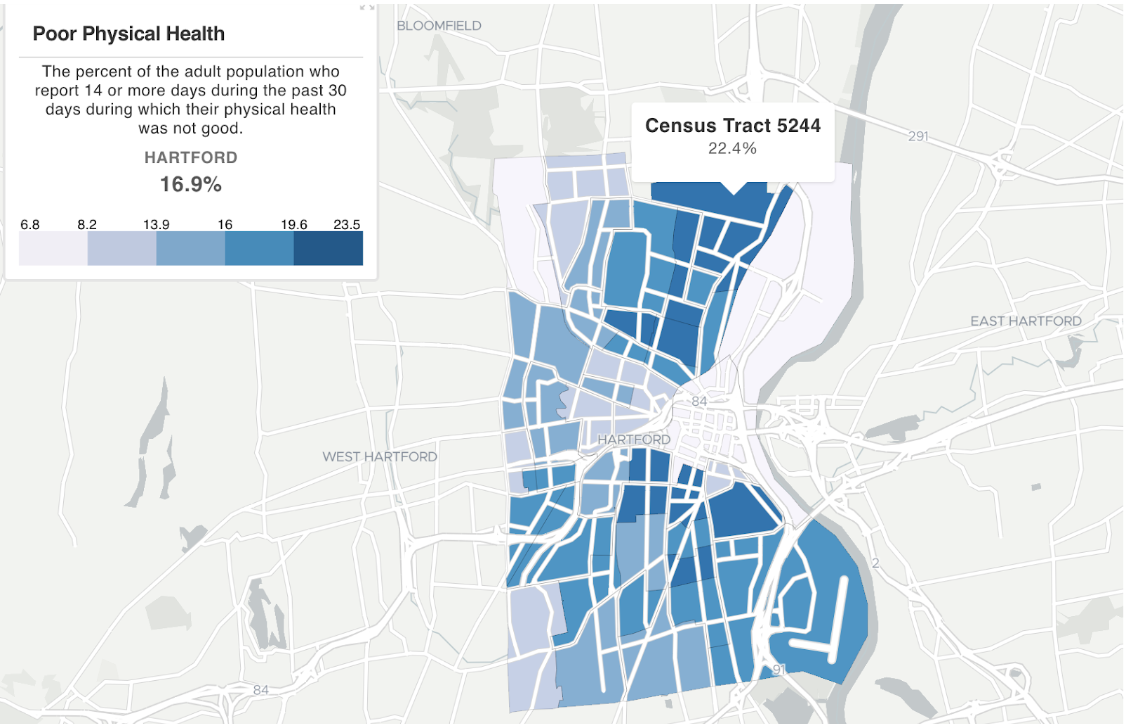Health Concerns
The community surrounding the park site deals with higher than average health issues. For example, there is the highest rate of adult arthritis, chronic kidney disease and diet related diseases, in this area known as North Hartford Promise Zone. As you can see in the table below, there is a large range of health disparities in this neighborhood, especially when compared to the United States as a whole.
| Disease | Tract 5244 | Hartford | US |
| Arthritis | 31.9% | 26.6% | 24.7% |
| Chronic Kidney | 4.5% | 3.1% | – |
| Asthma | 16% | 13% | 8.8% |
| High Blood Pressure | 48.1% | 34.8% | 31.9% |
| Cholesterol | 40.7% | 35.8% | 37.1% |
| Chronic Obstructive Pulmonary Disease | 11% | 7.1% | 6.3% |
| Coronary Heart Disease | 9.2% | 6.1% | 6.3% |
| Diabetes | 20.7% | 13.5% | 10.4% |
| Physical Health | 22.4% | 16.6% | 12.0% |
| No Leisure-Time; Physical Inactivity | 41.7% | 34% | 25.9% |
Source: CDC, 500 Cities Project
The following image shows that the census tract around the park site has the worst physical health in the Hartford County.

Source: http://hartforddata.ctdata.org/data/index.html#115/
Health & Park Site
The park site overlooks the North Meadow Landfill and a few survey participants have expressed health concerns due to the close proximity.
Studies have shown that the air quality is up to par and it is a safe place for people to congregate. The states of Connecticut released a report that declares, “The air in the neighborhood nearest the Landfill contained low levels of contaminants. These levels are similar to levels measured in other Connecticut urban centers.” For more information about the landfill and air quality, you can follow this link… Hartford Landfill Facts.
Health studies show that physical connections with nature can decrease medical illnesses. These include…
- lowered blood pressure
- lowered cholesterol
- higher survival rate after a heart attack
- faster recovery after surgery
- fewer minor medical complaints
- lower self-reported stress
- improvement in attention and behavioral disorders for children
Source: Fumkin, 2001
